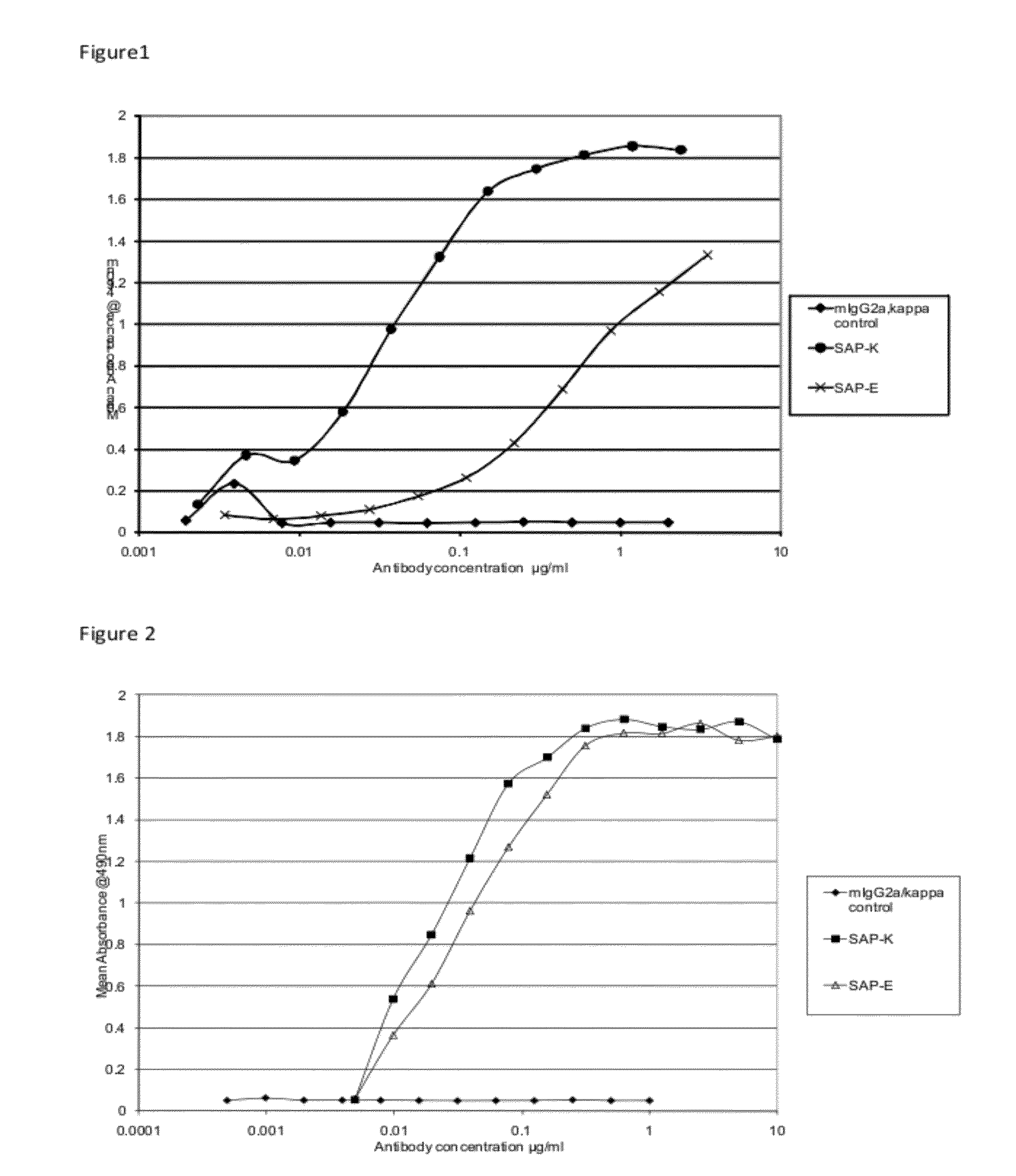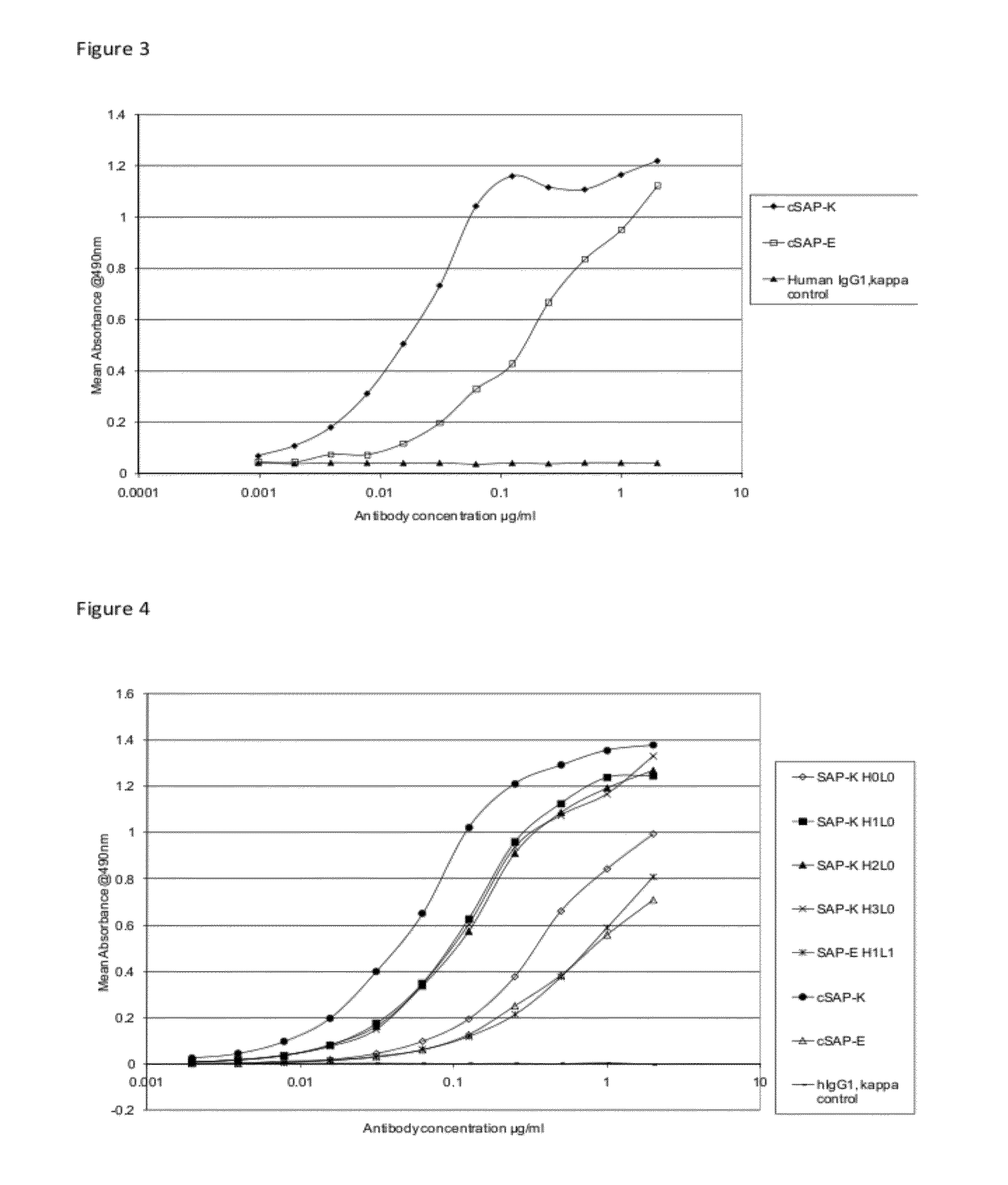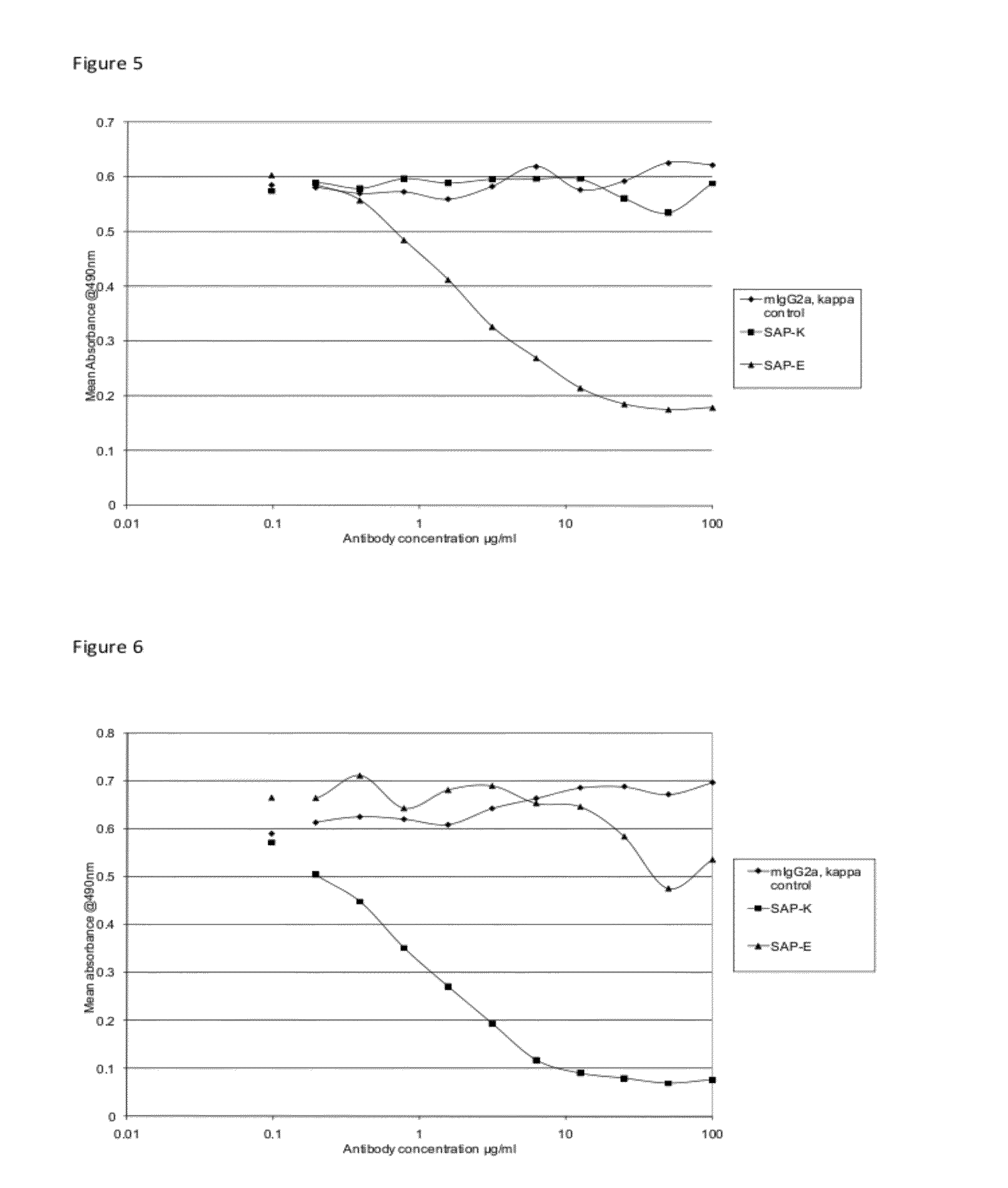Antigen binding proteins
a technology of binding proteins and antigens, applied in the field of antigen binding proteins, can solve the problems of a single anatomical location or tissue type, and a serious and usually fatal disease of amyloidosis, and achieve the effects of reducing the risk of apoptosis, and improving the survival rate of patients
- Summary
- Abstract
- Description
- Claims
- Application Information
AI Technical Summary
Benefits of technology
Problems solved by technology
Method used
Image
Examples
example 1
Sequencing of Hybridoma Variable Domains: SAP-E and SAP-K
[0243]SAP-E and SAP-K are from two groups of anti-SAP monoclonals, each group having been tested separately for their binding to human SAP in vitro. SAP-E and SAP-K showed the strongest binding to SAP, within their groups, and were compared with each other in different assays.
[0244]The first group of antibodies comprised antibodies from 7 hybridomas generated in a single conventional immunization with purified human SAP (SEQ ID NO:43 shown below) (details of method for purifying human SAP are given in Hawkins et al. (1991) Clin. Exp. Immunol. 84, 308-316) and fusion protocol and are designated SAP-A to SAP-G. Two of these antibodies, SAP-E and SAP-B, are IgG2a isotype while the others are all IgG1 isotype (see Example 13, Table 11).
[0245]The second group of antibodies comprised 6 different IgG2a monoclonals (SAP-H to SAP-M) derived by standard techniques from immunization with purified human SAP (SEQ ID NO:43 shown below) (Haw...
example 2
Construction of Chimeric Antibodies
[0248]Chimeric antibodies, comprising parent murine variable domains grafted onto human IgG1 / κ wild-type constant regions were constructed by PCR cloning for SAP-E and SAP-K. Based on the consensus sequence, primers to amplify the murine variable domains were designed, incorporating restriction sites required to facilitate cloning into mammalian expression vectors. Through introduction of the restriction site in FR4 (Framework Region 4 (V-region sequence following CDR3 and preceding first constant domain)) the VH amino acid sequence in SAP-E was changed from TTLTVSS as shown in SEQ ID NO:7 to TLVTVSS and the VH amino acid sequence in SAP-K was changed from TTVTVSS as shown in SEQ ID NO:17 to TLVTVSS. In the SAP-K variable light chain an internal EcoRI site was present in CDRL1 and mutagenesis primers were designed to remove this undesired internal EcoRI site by changing one base pair—this did not change the amino acid sequence.
[0249]The full length...
example 3
Humanisation Strategy
[0250]Humanised antibodies were generated by a process of grafting CDRH1, CDRH2, CDRH3, CDRL1, CDRL2 and CDRL3 from the murine antibody onto a suitable human framework sequence.
SAP-E Humanisation Strategy
SAP-E Heavy Chain Humanisation
[0251]For the SAP-E mouse variable heavy chain sequence a human germ line acceptor framework was selected (IGHV1-69, SEQ ID NO:25) which had 60% identity (including CDRs) with the mouse SAP-E variable heavy chain sequence (SEQ ID NO:7) together with the JH1 minigene (Kabat: AEYFQHWGQGTLVTVSS (SEQ ID NO:26)). The first six residues of the JH1 minigene residues fall within the CDR3 region and were replaced by the incoming CDR from the donor antibody.
[0252]Five humanised variants were generated on the basis of sequence comparison and possible impact on antibody function. Construct H0 was a straight graft of murine CDRs (using the Kabat definition) into the human acceptor framework selected above. Construct H1 has additional back-mutati...
PUM
| Property | Measurement | Unit |
|---|---|---|
| Fraction | aaaaa | aaaaa |
| Volume | aaaaa | aaaaa |
| Mass | aaaaa | aaaaa |
Abstract
Description
Claims
Application Information
 Login to View More
Login to View More - R&D Engineer
- R&D Manager
- IP Professional
- Industry Leading Data Capabilities
- Powerful AI technology
- Patent DNA Extraction
Browse by: Latest US Patents, China's latest patents, Technical Efficacy Thesaurus, Application Domain, Technology Topic, Popular Technical Reports.
© 2024 PatSnap. All rights reserved.Legal|Privacy policy|Modern Slavery Act Transparency Statement|Sitemap|About US| Contact US: help@patsnap.com










